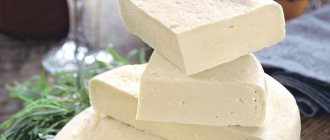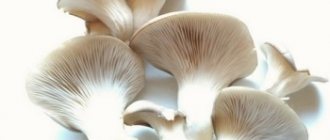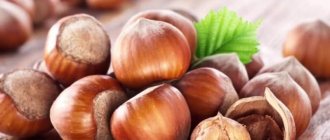Calories and nutritional value
Chocolate comes in several types depending on its composition. Calorie content and nutritional value of the product per 100 grams:
| Types of chocolate | Energy value (kcal) | Composition of proteins, fats and carbohydrates |
| Dark, black or bitter | 534 | 4,8/33/56 |
| Lactic | 554 | 9,8/34,7/50,4 |
| White | 541 | 4,2/30,4/62,2 |
One bar of chocolate usually contains 100 g. If the product has a different weight, then you can determine the calorie content using an online calculator, after first weighing the sweetness. For example, Alenka chocolate is available in 15, 20, 60 and 200 g. The number of calories in the last bar is 1088.14 kcal, and the composition of proteins, fats and carbohydrates: 17.80/67.42/106.46 g.
Chocolate with fillers has a different number of calories and BJU composition:
| Chocolate with additives | Number of calories | Composition of BJU |
| Alpen Gold with hazelnuts and raisins | 493 | 5,7/25,3/59,6 |
| Milka with hazelnuts | 545 | 6,6/33,8/53,4 |
| Babaevsky with nuts | 570 | 9/40/40 |
Chemical composition of the product
Main ingredients of bitter slab:
- cocoa mass - no less than 55%;
- cocoa butter - 33% or more;
- sugar.
Natural dark chocolate contains only these components. May also contain vanilla and vegetable sweeteners.
The auxiliary ingredients that the product contains in most cases are vanilla extract for aroma and the emulsifier soy lecithin. There are options that do not contain sugar, for example, “Victory of Taste” 72% with stevia.
Nutritional value (BJU): how many carbohydrates, proteins and fats are in 100 g
Let's take 72% chocolate as an example. Its BJU per 100 g:
- proteins – 6.2 g;
- fats – 35.5 g;
- carbohydrates – 48 g;
- dietary fiber - 7.5 g.
These are average numbers. They differ for different brands. For example, a bar of 72% Merci chocolate contains 7.7 g of protein, 42.7 g of fat, 33.5 g of carbohydrates, and its calorie content is 572 kcal.
It is permissible for an adult to eat no more than 40 g per day. Moreover, many nutritionists and scientists recommend eating the product not every day, but once every 2 days.
Vitamins and minerals
Of the vitamins, 100 g of the product contains (the percentage of the daily value is indicated in parentheses):
- E – 15 mg (5.3%),
- PP – 20 mg (10.5%),
- B1 – 1.5 mg (2%);
- B2 – 1.8 mg (4%).
There is also vitamin K (niacin) in small quantities. Of the macroelements, magnesium, phosphorus and potassium are the most abundant; calcium and sodium are also present. Microelements are represented by iron.
Biologically active substances
Cocoa is a rich source of valuable compounds that have beneficial effects on the body. Among them are:
- Theobromine is an alkaloid with a bitter taste, has a stimulating effect on the central nervous system, has antihistamine, moderate diuretic properties and a mild analgesic, relaxes blood vessels and smooth muscles.
- Flavonoids, in particular catechins, have anti-inflammatory and pronounced antioxidant properties, reduce the risk of diabetes, atherosclerosis, hypertension, heart attack, and Alzheimer's disease; strengthen blood vessels, reduce cholesterol.
- Tryptophan - regulates the functioning of the nervous system, relaxes, helps to rest peacefully, normalizes sleep, elevates mood, reduces irritability, alleviates PMS in women, helps overcome depression, neuroses, and apathy.
- Phenylethylamine - produces a similar but short-term effect to amphetamine, causing a state of euphoria and increased heart rate. Also increases mental concentration.
This is interesting
The action of each hormone in the human body is associated with a certain feeling or state. And if serotonin is associated with mood, dopamine with pleasure, adrenaline with fear, and oxytocin with trust, then phenylethylamine is associated with falling in love. In its natural form, it is synthesized in the hypothalamus when a person is in love.
In addition to those listed, cocoa beans, as well as high-quality dark chocolate, contain dopamine, anandamide, polyphenol, arginine, tyramine, tannin and other substances.
How much sugar is in chocolate 70-99%?
A 100g bitter bar can contain between 0 and 40%g sugar. It depends on the recipe, so you need to look at where it is on the list of ingredients. The closer to the beginning, the more there is, and vice versa. 99 percent of chocolate contains less than 1% or none at all.
Reference
For diabetics, chocolate is produced completely without sugar, with sweeteners - stevia, fructose, maltitol. They do not cause a sharp spike in blood sugar and are generally healthier.
Calorie content per 100 grams, how many calories are in one slice, in a tile
The energy value of 100 g of 72% chocolate is about 540 kcal. This figure can vary from 520 to 580 kcal, which is determined by the brand and composition of the product. The presence of nuts, dried fruits, candied fruits and other fillers increases calorie content.
If the tile weighs not 100, but 90 g, then it contains 465-520 kcal, and if 80 g, then 415-460 kcal, provided there are no additional additives. To find out the calorie content of 1 slice, you need to divide the energy value of the whole tile by the number of slices in it. Kcal in one cube is calculated in the same way. After all, different brands of tiles have different numbers of slices and squares (5 and 15, 6 and 24, etc.).
Vitamins and nutrients
Chocolate contains the following complex of vitamins:
- a nicotinic acid;
- thiamine;
- riboflavin;
- tocopherol
The chemical composition of the chocolate product includes the most beneficial macro- and microelements for the body, such as:
- iron;
- calcium;
- phosphorus;
- magnesium;
- potassium;
- magnesium.
Dark chocolate is the healthiest. It consists of 60% cocoa mass (the rest is cocoa powder), cocoa butter and sugar. High-quality products should contain a high percentage of cocoa liquor. True bittersweet is rich in flavonoids. These substances prevent the formation of blood clots.
Useful components and their properties:
- tannins - prevention of plaque on teeth;
- fluoride - strengthens teeth;
- phosphorus - improves brain function;
- calcium - bone tissue formation;
- grated cocoa - production of endorphins.
Benefits and harms of losing weight
To lose weight, you are allowed to eat only dark chocolate products containing a minimum amount of sugar and a high percentage of cocoa (from 70%).
There is a special chocolate diet, during which you need to eat no more than 100 g of the main component per day, while drinking a cup of coffee (without sugar). You should consult a nutritionist regarding the effectiveness of such nutrition.
Dietary chocolate bars with a calorie content of 420.25 kcal and BJU composition: 6.65/21.41/52.22 are sold. They contain a lot of fat, so it's worth buying a bar of dark chocolate.
Benefits of this product for weight loss:
- covers the feeling of hunger, creating a feeling of satiety;
- protects against stress and reduces the chance of overeating due to nervous tension;
- burns subcutaneous fat by accelerating metabolism;
- normalizes the amount of cholesterol (due to lipoprotein compounds in the composition).
Despite the benefits of the product, it can be harmful. When going on a chocolate diet, you need to know about its possible consequences:
- a large number of contraindications;
- high chance of failure;
- negative impact on the acidity of the stomach of a low-quality product.
When consuming more than 25 g of chocolate per day, you may gain extra pounds. It should be borne in mind that any mono-diet leads to a deficiency of vitamins and minerals.
How many kcal are in white chocolate?
The calorie content of all types of chocolate completely depends on the type of confectionery product. Bitter has the fewest calories due to the fact that it contains a minimal amount of sugar. White chocolate belongs to the middle group in terms of calorie content.
The composition of the white variety differs from what can be found in dark samples of the sweet delicacy. First of all, it should be noted that white varieties completely lack cocoa in grated form and powder. The recipe is based on cocoa butter, to which the remaining ingredients are added. And during production it is necessarily deodorized in order to eliminate foreign tastes and odors.
For options intended for diabetics, sweeteners are used instead of sugar. For other types, refined sugar is used. Another component of this product is milk. It enters the product only in dry form. If we are talking about cheap varieties of white chocolate, then their composition includes vegetable fats, which sometimes replace cocoa butter.
The aroma and taste of the sweet mass are given by flavoring agents and flavoring additives. Most often, vanillin is added to white varieties, which gives the tiles a creamy color. The main caramel flavor comes from the milk to the chocolate. The final calorie content of chocolate depends on this entire set of substances.
Product percentage composition:
- cocoa butter – at least 20%;
- milk powder – 14%;
- milk fat – 3.5%;
- sugar or its substitutes – no more than 55%.
100 g of white chocolate contains (kcal):
- in the classic version - approximately 553;
- with strawberries – 582;
- with whole nuts – 583;
- with almonds – 545.
Airy white chocolate: its calorie content is the lowest - only 225 kcal.
White chocolate, whose calorie content depends on the amount of sugar added to the product, is recommended to be consumed as a snack when there is no opportunity to eat and you need to quickly restore the body's strength.
Contraindications
Before deciding to go on a chocolate diet, you should consult your doctor. The use of a weight loss product is prohibited:
- people prone to allergies;
- persons with diabetes;
- patients with cholelithiasis, liver and pancreas pathologies.
Other contraindications to consuming chocolate products include the following diseases and conditions:
- avitaminosis;
- arterial hypertension;
- heart and vascular diseases;
- anemia;
- pregnancy;
- lactation period;
- diseases of the gastrointestinal tract;
- frequent constipation.
How to choose the healthiest chocolate
Compound
Careful examination of the packaging is the key to a successful and healthy chocolate purchase. The law is on the consumer’s side - it obliges the manufacturer to indicate the entire component composition and its concentration. But studying the composition is not as simple as it might seem at first glance. The manufacturer cleverly inserts completely incomprehensible terms behind which flavors, preservatives and other achievements of the gastronomic industry are hidden. In order not to fall for a tricky bait, remember one rule: the shorter and clearer the composition of chocolate, the better it is. The reference composition looks like this:
- grated cocoa;
- cocoa butter;
- sugar/sweetener;
- lecithin.
Let's look at each ingredient in more detail.
Cocoa liquor
The ingredient is obtained from cocoa beans. After harvesting, the beans are fermented, then dried and roasted.
The lower the temperature at which cocoa beans are roasted, the healthier the final product.
After heat treatment, the grains are crushed and ground on rollers - hence the name “grated beans”. Cocoa butter is later squeezed out of the prepared beans using a hydraulic press.
Cacao butter
It is considered the most valuable component in chocolate. It is in it that the lion's share of useful vitamins, nutrients and, accordingly, benefits are concentrated. Real butter made from ground cocoa beans is expensive. Many manufacturers, in order to save money, replace oil with carcinogenic fats or other less healthy surrogates.
Sugar/sweeteners
Most commercially produced chocolate contains pure sugar. If you have given up sugar powder on your own initiative or for health reasons, then pay attention to products with sweeteners. They are sold in the department of healthy, diabetic products or at local retail outlets. It is best if sugar is replaced with banana, dates or soy milk. Stevioside is also in good standing among confectioners. This is an extract from the “honey herb” - stevia. The component is considered a natural sweetener. Its taste is several times sweeter than sugar, has a zero glycemic index and minimal calorie content.
Avoid sweets with artificial sweeteners like sucralose, saccharin, cyclamate and aspartame.
Lecithin
This is one of the emulsifiers (E322) that are allowed by GOST. The component is isolated from soybean oil, so chocolate with lecithin is suitable even for vegans. The presence of an ingredient should not alarm or discourage you from purchasing. But if you have a choice between “natural” chocolate and sweets with lecithin, choose the first.
Undesirable components in the composition
Cocoa powder
This ingredient remains after the oil is squeezed out of the cocoa beans. The powder is considered less healthy and cheaper compared to grated cocoa. It is the low cost that attracts manufacturers. The presence of butter, powder, and grated cocoa in the composition is considered acceptable - such chocolate will not harm the body. If the tile consists entirely of cheap powder, you need to find a more useful option.
cocoa shell
Behind the elegant name lies the usual crushed husk of cocoa beans. This is a low-grade ingredient that contains neither vitamins nor beneficial nutrients. Some manufacturers have gone further and decided to add carob bark or roasted grape seeds to chocolate. Their taste is vaguely reminiscent of chocolate, so an inexperienced consumer will not notice the substitution.
Cocoa butter substitutes
They are only allowed in chocolates and bars. The presence of substitutes in pure chocolate bars is unacceptable. Various equivalents are used to reduce the cost of production and obtain the highest possible profit. Manufacturers use the following oils (instead of cocoa): coconut, shea, palm, illipe. Vegetable oils are additionally saturated with hydrogen so that the final product becomes solid and suitable for consumption. The result is trans fat, which harms the functioning of the heart and blood vessels and contributes to the development of diabetes and obesity.
Flavor enhancers
They are simply not needed for high-quality sweets. Organic ingredients excite taste buds without sugar or additional chemicals. Enhancers are needed in low-quality chocolate to make it more tasty and attractive. Most often, manufacturers use the following preservatives: maltol (E636) and ponceau 4R (E124). Amplifiers can cause an allergic reaction and diseases of the gastrointestinal tract.
Appearance
High-quality cocoa tiles should be glossy and naturally shiny. If a specific or white coating has formed on the chocolate, it means it was stored incorrectly. Of course, you can eat such a bar, but its composition and taste characteristics are most likely compromised.
Carry out an easy quality test - break the chocolate. The pieces should crunch loudly and loudly when pressed. The tile break should remain matte.
High-quality chocolate will instantly leave dark marks on your hands. The melting point of cocoa butter is significantly lower than the temperature of the human body, so contamination cannot be avoided.
Percentage on packaging
This is the most important criterion for choosing sweets. Percentages indicate the level of cocoa products in a particular bar. Most often, the manufacturer indicates the percentage on the front of the wrapper in the largest possible font.
What you need to know about percentages:
- Good chocolate should contain at least 20% cocoa butter. If this figure is below 20%, then this is a confectionery tile. The product is used for making homemade baked goods, decorating cakes and desserts. The confectionery bar consists of sugar and vegetable fat, so it does not reach the level of an independent dessert;
- a bar with a cocoa content of 40% is considered dark or dessert. The sweetness is dominated by grated cocoa;
- a bar in which the cocoa concentration starts from 55% is considered bitter. It's not yet very bitter, but it's no longer dark chocolate. The product is restrained in sweetness, but does not contain bitter/tart notes;
- The percentage of cocoa in real dark chocolate ranges from 70 to 85%. The product should not contain milk or fillings, so as not to interrupt the real taste of cocoa products;
- a bar with a cocoa concentration of 97-99% is not chocolate. It's just a compressed slab of grated cocoa. This product is characterized by a high concentration of fat and bitterness.
The daily dose of chocolate for an adult is 40 grams (half a traditional chocolate bar).











